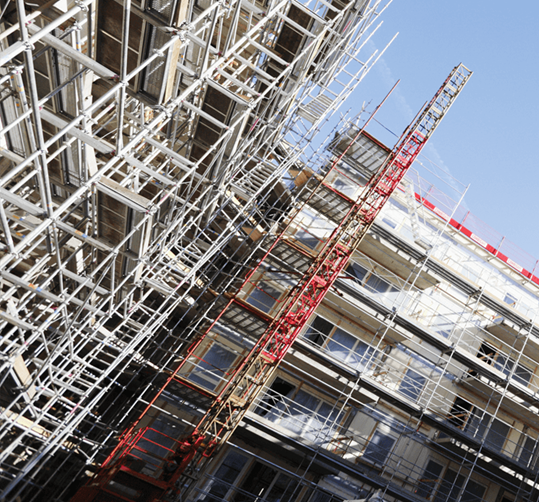High-rise buildings, often known as skyscrapers, are marvels of modern engineering and architecture. Constructing these towering structures involves complex technical features that ensure safety, functionality, and sustainability. From advanced foundation systems to innovative structural frameworks and state-of-the-art materials, high-rise construction is a blend of science, technology, and artistry.
Foundation Systems
The foundation is the most critical component of any high-rise building, bearing the enormous load of the structure and ensuring stability. Several types of foundation systems are used in high-rise construction:
- Deep Foundations: High-rise buildings often require deep foundations such as piles and caissons. These are driven deep into the ground to reach stable soil or rock layers, providing a solid base to support the structure’s weight.
- Mat Foundations: Also known as raft foundations, these are large, thick concrete slabs that cover the entire building footprint. They distribute the load evenly and are used when the soil has a low bearing capacity.
- Pile Foundations: Piles are long, slender columns made of steel, concrete, or timber, driven into the ground to transfer the load to deeper, more stable soil layers. They are essential in areas with weak surface soils.
Structural Systems
The structural system of a high-rise building must be designed to withstand various forces, including gravity loads, wind loads, and seismic forces. Several structural systems are commonly used:
- Steel Frame Construction: Steel is a preferred material due to its high strength-to-weight ratio and flexibility. Steel frame construction involves creating a skeleton of steel beams and columns, which provides the primary support for the building.
- Reinforced Concrete: Reinforced concrete combines the compressive strength of concrete with the tensile strength of steel reinforcement bars (rebar). This system is highly durable and fire-resistant, making it suitable for high-rise buildings.
- Core and Outrigger Systems: In this system, a central reinforced concrete core provides the primary lateral stability, while outrigger trusses connect the core to perimeter columns, distributing the loads and increasing the building’s overall stiffness.
- Shear Wall Systems: Shear walls are vertical elements that resist lateral forces from wind and earthquakes. These walls are strategically placed throughout the building to provide additional stability and prevent swaying.
Facade and Cladding
The facade of a high-rise building is not only an aesthetic element but also a crucial component for energy efficiency and environmental control. Several technical features are incorporated into high-rise facades:
- Curtain Walls: Curtain walls are non-load-bearing exterior walls made of glass, metal, or other lightweight materials. They provide an attractive exterior while allowing natural light to penetrate the building.
- Double-Skin Facades: This system consists of two layers of glass separated by an air cavity. It enhances thermal insulation and acoustics, improving the building’s energy efficiency and indoor comfort.
- High-Performance Glazing: Advanced glazing technologies, such as low-emissivity (low-E) coatings and insulated glass units (IGUs), are used to reduce heat gain and loss, contributing to the building’s overall energy efficiency.
Mechanical, Electrical, and Plumbing (MEP) Systems
The MEP systems are vital for the functionality and comfort of high-rise buildings. These systems include:
- HVAC Systems: Heating, ventilation, and air conditioning (HVAC) systems are essential for maintaining indoor air quality and temperature control. High-rise buildings often use centralized HVAC systems with efficient air distribution networks.
- Electrical Systems: High-rise buildings require robust electrical infrastructure to support lighting, power, and communication needs. This includes backup generators, uninterruptible power supplies (UPS), and energy-efficient lighting solutions.
- Plumbing Systems: Plumbing in high-rise buildings involves complex networks of pipes and pumps to ensure reliable water supply and waste management. Advanced plumbing systems include water-saving fixtures and efficient wastewater treatment solutions.
Vertical Transportation
Efficient vertical transportation is crucial in high-rise buildings to ensure smooth movement of people and goods. Key technical features include:
- Elevator Systems: High-speed elevators with advanced control systems are used to minimize wait times and enhance efficiency. Double-deck elevators and sky lobbies are also employed to handle high traffic volumes.
- Escalators and Moving Walkways: These are used in larger buildings to facilitate movement between floors and across long distances within the building.
Safety and Fire Protection
Safety is paramount in high-rise construction. Several technical features are implemented to ensure the safety of occupants:
- Fire Protection Systems: These include sprinkler systems, fire alarms, smoke detectors, and fire-resistant materials. Compartmentalization and fireproofing of critical areas are also essential.
- Emergency Exits: Well-planned emergency exits, including staircases and evacuation routes, are crucial for safe evacuation during emergencies.
- Structural Redundancy: Designing buildings with redundancy in structural elements ensures that the building remains stable even if some components fail.
Sustainability and Green Building Practices
Sustainability is a growing concern in high-rise construction. Key features include:
- Energy-Efficient Systems: Incorporating energy-efficient HVAC, lighting, and electrical systems reduces the building’s overall energy consumption.
- Renewable Energy: Utilizing renewable energy sources, such as solar panels and wind turbines, contributes to the building’s sustainability.
- Green Roofs and Vertical Gardens: These features enhance insulation, reduce the heat island effect, and promote biodiversity.
Conclusion
High-rise building construction is a complex and dynamic field that integrates various technical features to ensure the stability, safety, and sustainability of these towering structures. Advances in engineering, materials, and technology continue to push the boundaries of what is possible, creating skyscrapers that are not only architectural marvels but also functional and environmentally responsible.
